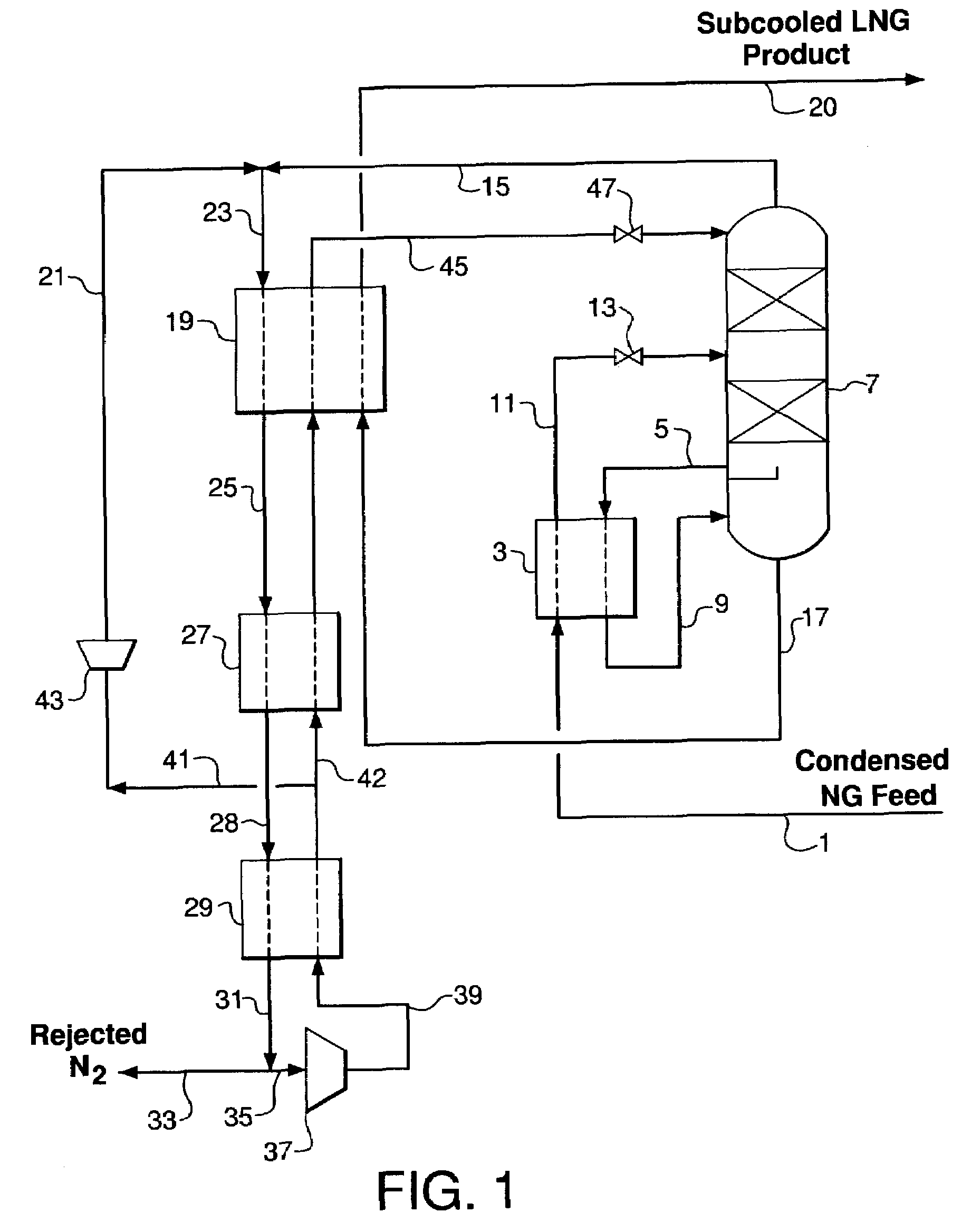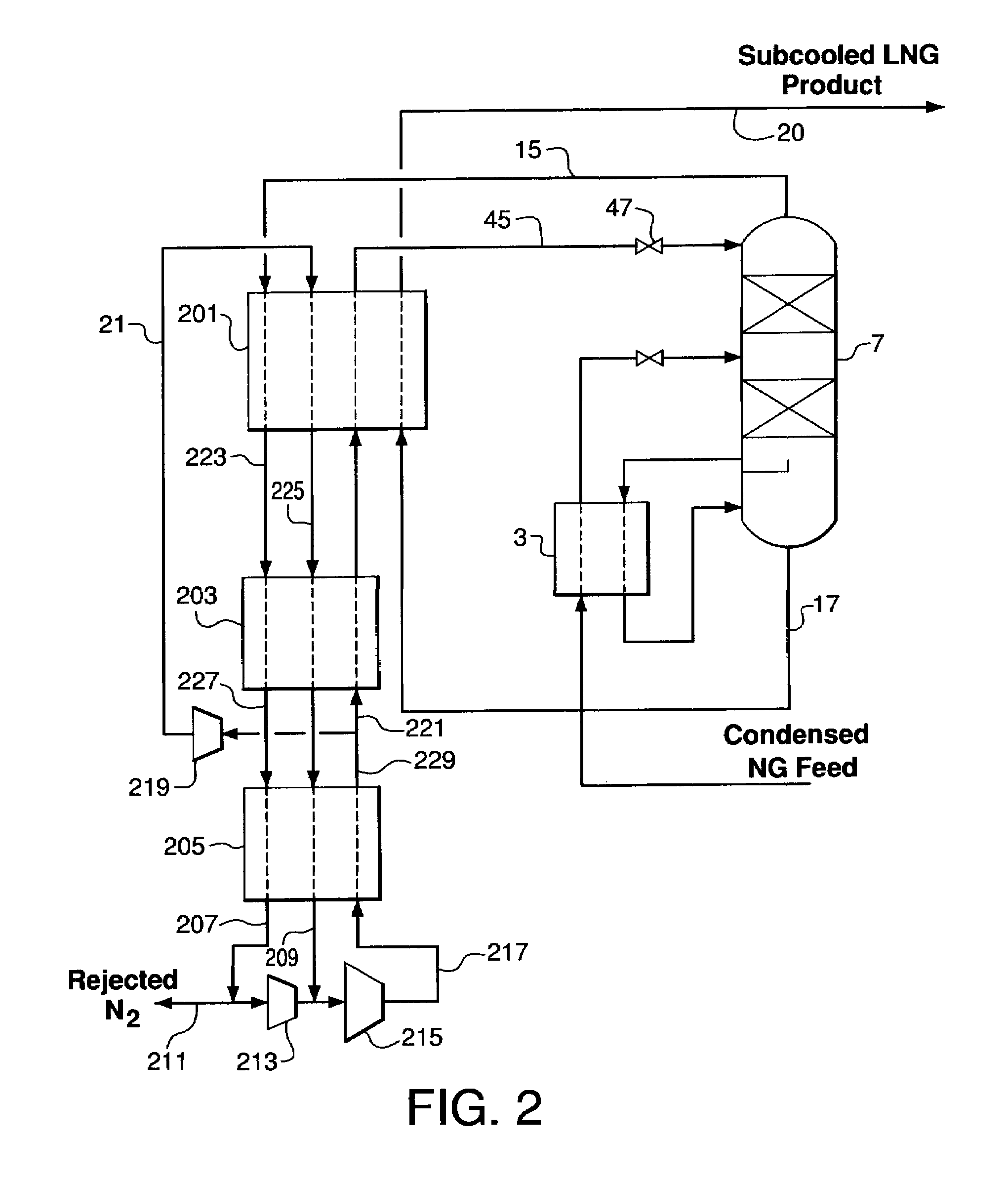Nitrogen rejection from condensed natural gas
a technology of condensed natural gas and nitrogen, which is applied in the direction of gaseous fuels, liquefaction, lighting and heating apparatus, etc., can solve the problems of reducing the options for disposing of rejected nitrogen, unable to vent the nitrogen stream, and generating fuel gas streams in the final steps of the liquefaction process. , to achieve the effect of reducing the pressure of the condensed natural gas prior to the distillation column
- Summary
- Abstract
- Description
- Claims
- Application Information
AI Technical Summary
Benefits of technology
Problems solved by technology
Method used
Image
Examples
example
[0116]An embodiment of the invention as described with reference to FIG. 1 may be illustrated by the following non-limiting Example. A condensed natural gas feed stream at a flow rate of 100 lbmoles per hour containing (in mole %) 4.0% nitrogen, 88.0% methane, 5.0% ethane and 3.0% propane and heavier hydrocarbons at −165° F. and 741 psia is provided via line 1 and is cooled to −190° F. in the reboiler heat exchanger 3. The cooled LNG feed stream in line 11 from the reboiler is flashed across expansion valve 13 to 144 psia and introduced at an intermediate location into distillation column 7. A purified LNG product stream is withdrawn via line 17 at a flow rate of 96.94 lbmoles per hour containing (in mole %) 1.00% nitrogen, 90.75% methane, 5.16% ethane and 3.09% propane and heavier hydrocarbons at −190° F. and 147 psia. This LNG product stream is subcooled to −235° F. in heat exchanger 19 and sent to storage via line 20.
[0117]A nitrogen-rich overhead vapor stream is withdrawn from d...
PUM
 Login to View More
Login to View More Abstract
Description
Claims
Application Information
 Login to View More
Login to View More - R&D
- Intellectual Property
- Life Sciences
- Materials
- Tech Scout
- Unparalleled Data Quality
- Higher Quality Content
- 60% Fewer Hallucinations
Browse by: Latest US Patents, China's latest patents, Technical Efficacy Thesaurus, Application Domain, Technology Topic, Popular Technical Reports.
© 2025 PatSnap. All rights reserved.Legal|Privacy policy|Modern Slavery Act Transparency Statement|Sitemap|About US| Contact US: help@patsnap.com



